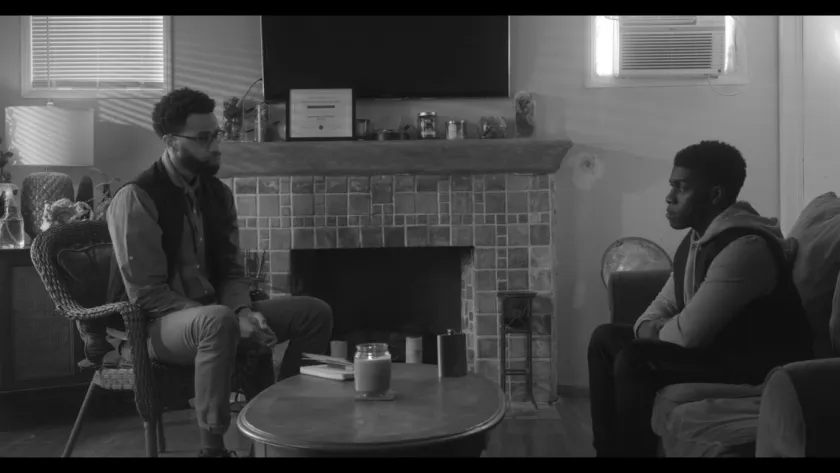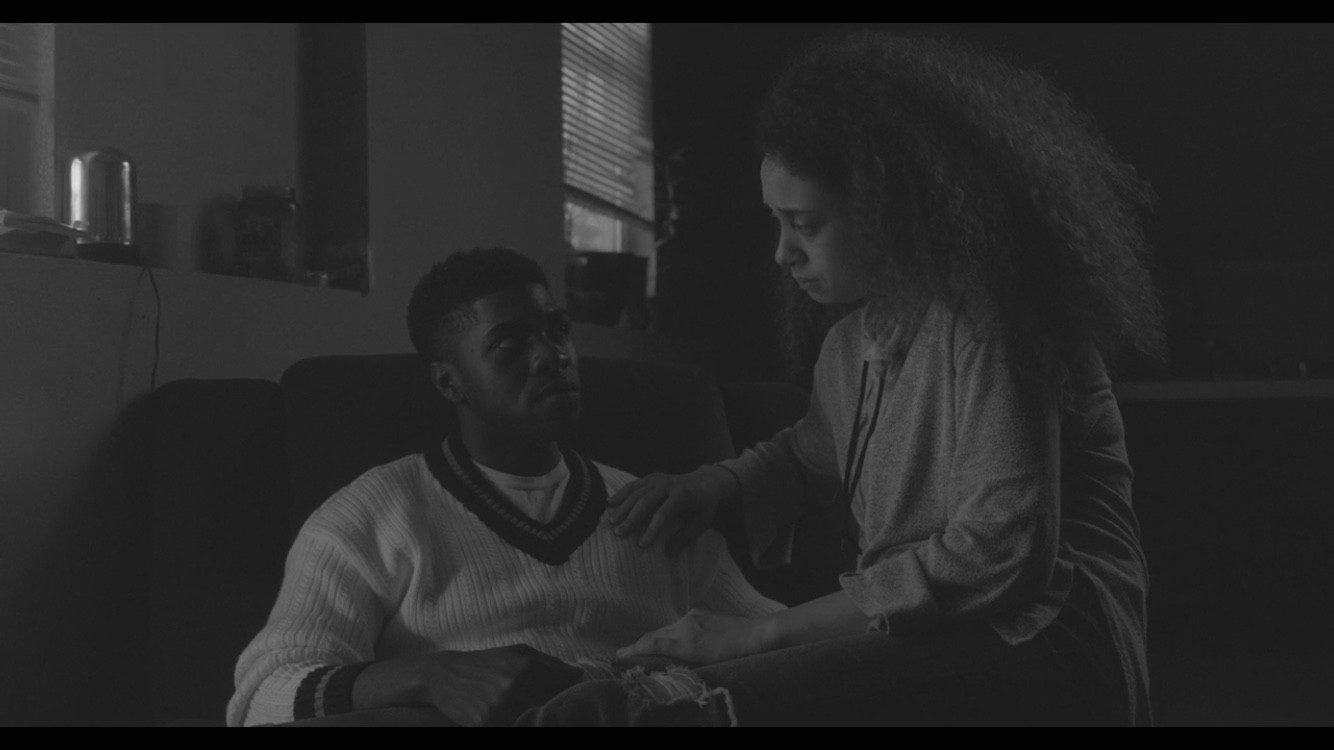Mickey Hardaway is a tale told with tenderhearted rage but never really feels comfortable expressing itself in a way that might appear messy or natural. Instead, there is a strange sense of pragmatic calculation, an attempt to be clearly understood. But, this comes at the expense of allowing us to discover those things ourselves.
Written and directed by Marcellus Cox, Mickey Hardaway is about a troubled young man spiraling into a violent emotional rage. In some ways, it is a story we’ve seen a hundred times before, that of a disaffected youth, abused by life and forgotten by the systems, but they are usually white. Instead, Mickey (Rashad Hunter) is a young black man, a talented cartoonist whose life is overflowing with tragedy and obstacles.

Hunter’s Mickey is a terse and sensitive character. His body is stiff and closed off, so used to violence that he expects it from everyone. Hunter delivers Mickey’s lines as if he’s struggling to put his emotion into words. Words don’t seem to flow from his mouth easily; even when talking to his therapist Dr. Cameron Harden (Stephen Cofield Jr.), Mickey has trouble expressing himself.
Cox and his cameraperson Jamil Gooding, who also edited the film, frame Mickey Hardaway almost like a soft-lit nightmare. The film has a lyrical beauty, shot mainly in black and white at times, and a brutal honesty at others. The dichotomy elevates Mickey Hardaway despite its shortcomings. Cox and Gooding create a potent emotion in their frames by utilizing light and shadows, resulting in a film noir feel, and in a way, the movie is a film noir. No one is getting out unscathed.
Not Mickey’s abusive alcoholic father, Randall (David Chattam), his well-meaning school teacher Mr. Sweeney (Dennis L.A. White), his girlfriend Grace (Ashley Parchment), and especially the duplicitous editor Nathan (Samuel Whitehill). These are all characters trapped by circumstance, none more so than Mickey. Like noir, these characters are trapped by their pasts and obsessions, with their tragic fates written in stone.
The problem is that Cox’s script can’t quite figure out how to express all this. Instead, the characters speak to the issue directly, hitting the nail on the head, but in a superficial way. Characters talk in a way that neither feels real nor in a way that feels as if the character would say them. The dialogue sometimes feels like it’s trying its best not to be misunderstood, trying to play it safe.
Despite Cox’s structuring of Mickey Hardaway, we start at the beginning and then flashback as the film shows us how we got there; there’s a curious lack of tension. There’s tension within the scenes, but they don’t carry over. Some scenes, such as when Mickey confronts Nathan about stealing his idea or when Mickey picks up a baseball bat and beats his father after he’s pushed too far, vibrate with possibility. The latter scene, in particular, had me wondering if he would turn his bat on his mother, Jackie (Gayla Johnson), who, at best, comes off as ambivalent about her son’s abuse.
Yet, there would be moments like when Cox follows Mickey and Grace to Pacific Park. The montage is in color, showing Cox’s deft understanding of visual storytelling and Gooding’s talent for incisive cuts and lighting. As a result, the scene feels alive in a way much of Mickey Hardaway doesn’t.
At one point, Mickey becomes so frustrated while arguing with his former teacher Mr. Sweeney, that he denounces God. Cox is trying to show how abuse can make someone feel unloved and reject love in all forms. But the scene feels too short. Finally, Mr. Sweeney chastises him, and that’s the end of it.
Mickey Hardaway started life as a short and then became a feature-length film. I haven’t seen the short, but it might pack more of a wallop. I couldn’t help but feel Cox was holding back as if he was yearning to be more explosive and less black and white. While wonderfully acted by Hunter and Cofield, the therapy sessions feel truncated.
On the one hand, they hold a particular fascination, as Dr. Harden is not the best therapist. I can’t imagine it’s best practice when treating a patient with anger issues like Mickey to tell them to go to their partner’s house after they expressly tell them they don’t want to talk. But, on the other hand, the fact that Dr. Harden is not perfect is an aspect of Mickey Hardaway I found fascinating. He would have been boring if he had been excellent, but Harden isn’t a doctor, so much as being symbolic of another institution failing to help Mickey.
The issue is, Mickey’s journey feels less organic and more like fulfilling narrative obligations. Obligatory meet cutes and discussions about Mickey’s struggles with accepting love, right up to the ending, which has Mr. Sweeny and a cop Officer Williamson (Sean Alexander James), have a debate that sounds like something a studio would mandate. The ending, while tragic, feels cheapened by the exchange, as it feels less like dialogue and more like citing clinical pamphlets and opinion editorials.

Still, flourishes such as how Cox uses sounds offer further proof of Cox’s ingenuity. Moments such as when young Mickey is so focused on the world he’s creating on the page that the voices drown out his mother’s voice. Or how the outside noises sometimes threaten to overwhelm the characters’ conversation. Cox uses sound to show how the world can sometimes feel overwhelming, constantly invading our lives even as we seek solace and escape.
Mickey Hardaway is a promising debut, as features go. But it feels as if Cox is in search of himself. I hope his next feature sees him doing just that.
Images courtesy of Marcellus Cox
Have strong thoughts about this piece you need to share? Or maybe there’s something else on your mind you’re wanting to talk about with fellow Fandomentals? Head on over to our Community server to join in the conversation!

